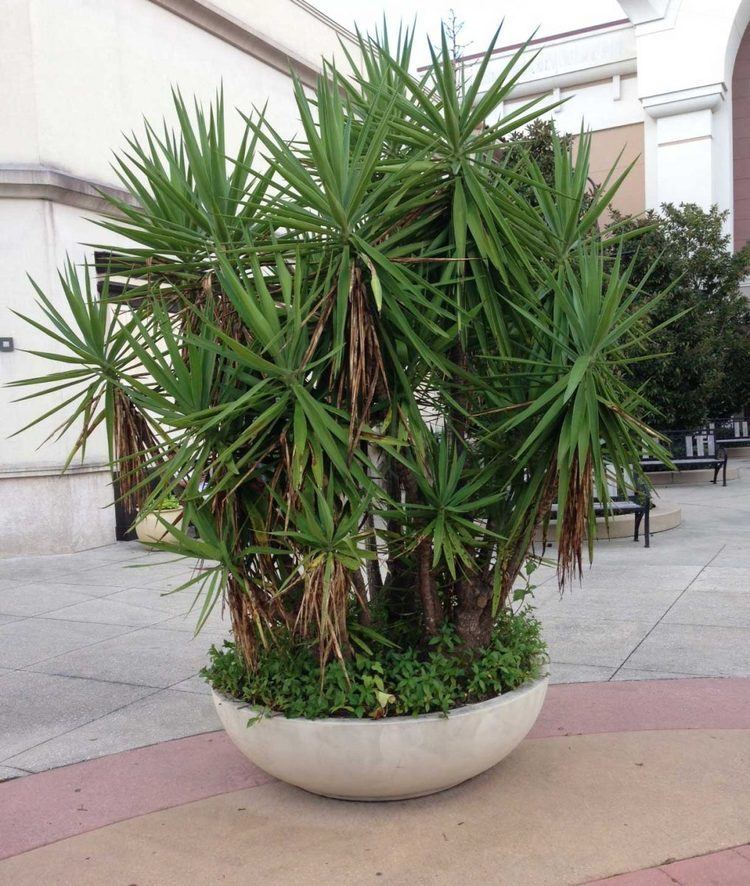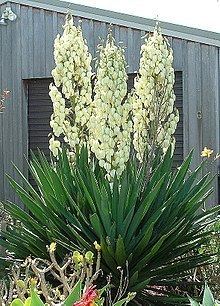Clade Angiosperms Scientific name Yucca Rank Genus | Clade Monocots Subfamily Agavoideae Higher classification Agavoideae | |
Did you know New Mexico designated the blossom of the desert yucca plant (pronounced "yuh-ka") as the state flower in 1927. Lower classifications Yucca filamentosa, Spineless yucca, Joshua tree, Yucca gloriosa, Yucca rostrata | ||
Yucca propagation and transplant
Yucca is a genus of perennial shrubs and trees in the family Asparagaceae, subfamily Agavoideae. Its 40-50 species are notable for their rosettes of evergreen, tough, sword-shaped leaves and large terminal panicles of white or whitish flowers. They are native to the hot and dry (arid) parts of the Americas and the Caribbean. Early reports of the species were confused with the cassava (Manihot esculenta). Consequently, Linnaeus mistakenly derived the generic name from the Taíno word for the latter, yuca (spelled with a single "c"). It is commonly found growing in rural graveyards and when in bloom the cluster of (usually pale) flowers on a thin stalk appear as floating apparitions.
Contents
- Yucca propagation and transplant
- Burke s backyard how to strip a yucca
- Distribution
- Ecology
- Adaptations
- Uses
- Cultivation
- Symbolism
- Species
- Taxonomic arrangement
- Cultivars
- References
Burke s backyard how to strip a yucca
Distribution
The natural distribution range of the genus Yucca (49 species and 24 subspecies) covers a vast area of the Americas. The genus is represented throughout Mexico and extends into Guatemala (Yucca guatemalensis). It also extends to the north through Baja California in the west, northwards into the southwestern United States, through the drier central states as far north as southern Alberta in Canada (Yucca glauca ssp. albertana). Yucca is also native to the lowlands and dry beach scrub of the Gulf and South Atlantic States from coastal Texas to easternmost Virginia. Yuccas have adapted to an equally vast range of climatic and ecological conditions. They are to be found in rocky deserts and badlands, in prairies and grassland, in mountainous regions, in light woodland, in coastal sands (Yucca filamentosa), and even in subtropical and semitemperate zones, although these are generally arid to semi-arid.
Ecology

Yuccas have a very specialized, mutualistic pollination system, being pollinated by yucca moths (family Prodoxidae); the insect purposefully transfers the pollen from the stamens of one plant to the stigma of another, and at the same time lays an egg in the flower; the moth larva then feeds on some of the developing seeds, always leaving enough seed to perpetuate the species. Certain species of the yucca moth have evolved antagonistic features against the plant and do not assist in the plants pollination efforts while continuing to lay their eggs in the plant for protection. Yucca species are the host plants for the caterpillars of the yucca giant-skipper (Megathymus yuccae), ursine giant-skipper (Megathymus ursus), and Strecker's giant-skipper (Megathymus streckeri).
Adaptations

Species of yucca have adapted to a wide variety of climates in mountains, coastal sand, grasslands and prairies as well as rocky badlands and deserts. Most species of yucca have thick, waxy skins to prevent loss of water through evaporation. They frequently store water in thick roots. Some yuccas store water in thick, fleshy leaves. Some desert plants have an oily coating on their leaves or pads that traps moisture, thereby reducing water loss. Some species drop their leaves during drought to prevent the loss of water through transpiration. Dead leaves of yucca collecting against the trunk of the trees help protect it from the sun. The channeled leaves of a yucca direct dew and rainfall water to their roots. Yuccas are said to be "fire adapted"; that is, they grow and spread vigorously after wildfires.
Uses

Yuccas are widely grown as ornamental plants in gardens. Many species also bear edible parts, including fruits, seeds, flowers, flowering stems, and more rarely roots. References to yucca root as food often arise from confusion with the similarly pronounced, but botanically unrelated, yuca, also called cassava or manioc (Manihot esculenta). Roots of soaptree yucca (Yucca elata) are high in saponins and are used as a shampoo in Native American rituals. Dried yucca leaves and trunk fibers have a low ignition temperature, making the plant desirable for use in starting fires via friction. In rural Appalachian areas, species such as Yucca filamentosa are referred to as "meat hangers". The tough, fibrous leaves with their sharp-spined tips were used to puncture meat and knotted to form a loop with which to hang meat for salt curing or in smoke houses.
Cultivation

Yuccas are widely grown as architectural plants providing a dramatic accent to landscape design. They tolerate a range of conditions, but are best grown in full sun in subtropical or mild temperate areas. In gardening centres and horticultural catalogues they are usually grouped with other architectural plants such as cordylines and phormiums.
Joshua trees (Yucca brevifolia) are protected by law in some states. A permit is needed for wild collection. As a landscape plant, they can be killed by excessive water during their summer dormant phase, so are avoided by landscape contractors.
Several species of yucca can be grown outdoors in temperate climates, these include:-
Symbolism
The "yucca flower" is the state flower of New Mexico. No species name is given in the citation.
Species

As of February 2012, the World Checklist of Selected Plant Families recognizes 49 species of Yucca and a number of hybrids:
A number of other species previously classified in Yucca are now classified in the genera Dasylirion, Furcraea, Hesperaloe, Hesperoyucca, and Nolina.
Taxonomic arrangement
Cultivars
In the years from 1897 to 1907, Carl Ludwig Sprenger created and named 122 Yucca hybrids.
